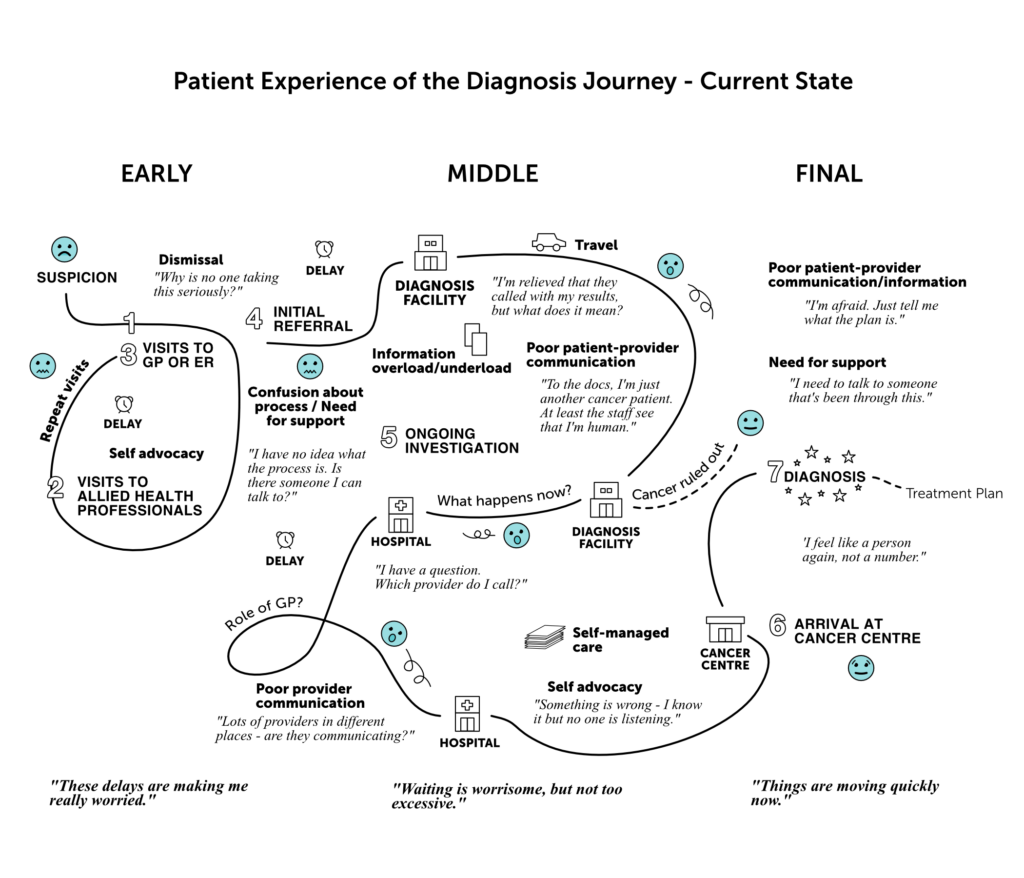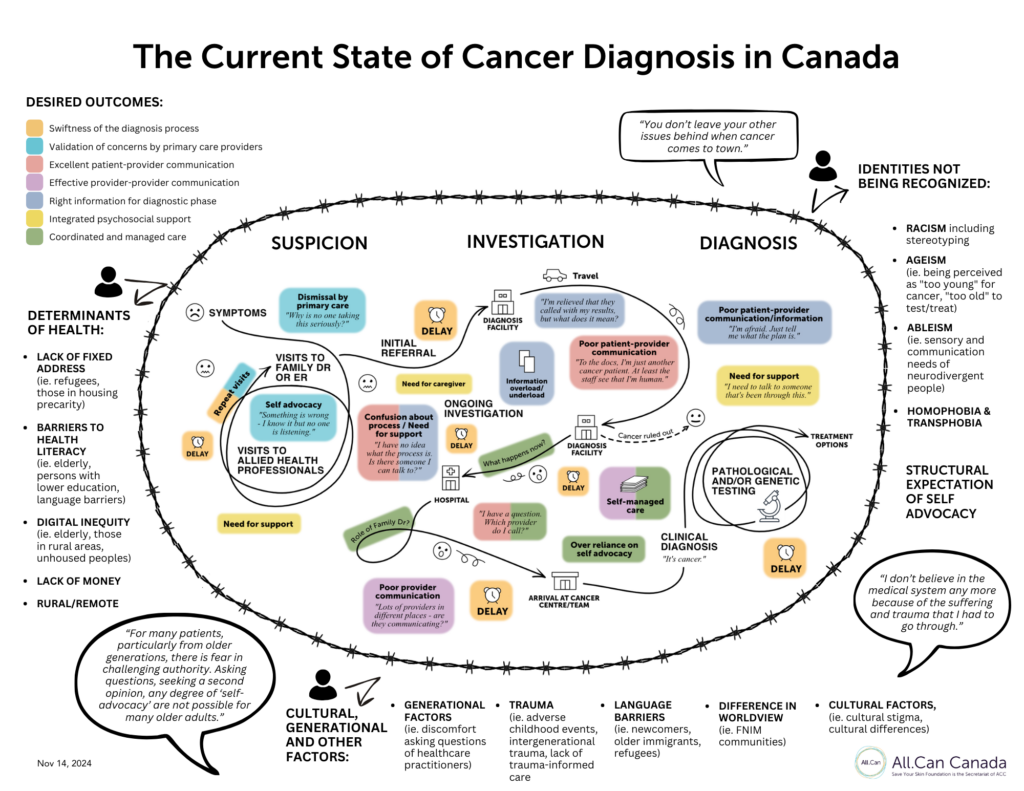The first iteration of ACC’s ‘Current State of Cancer Care in Canada’ patient experience map came out of 2-year mixed-methods research project from 2019-2021 which assessed the current state of cancer diagnosis in Canada. The research report, ‘Optimizing Diagnosis in Canadian Cancer Care,’ can be read here. 
Often coined “the spaghetti map”, the map depicts the complicated trajectory one experiences while undergoing investigation for possible cancer, often cycling through visits to primary care or the emergency room, and facing numerous delays at various points along the diagnostic path.
Following ACC’s 3rd Roundtable, ‘Optimizing Equitable Cancer Diagnoses in Canada,’ we learned from participants that many people in underserved populations and First Nations, Inuit and Metis communities have been filtered out of this map, as they face further structural barriers to accessing the healthcare system. They do not even get into the early phase of diagnosis. Intersecting and compounding factors were named that cross all levels of health care from the micro to the meso to the macro. These intersectional factors can stop or drastically slow people from engaging with the healthcare system at all.
We’re pleased to share the updated version of our ‘Current State’ patient experience map, which includes the barriers that various underserved populations and FNIM communities experience when trying to interact with the healthcare system.
